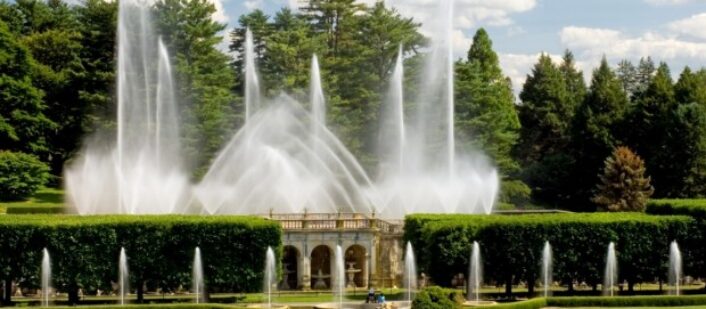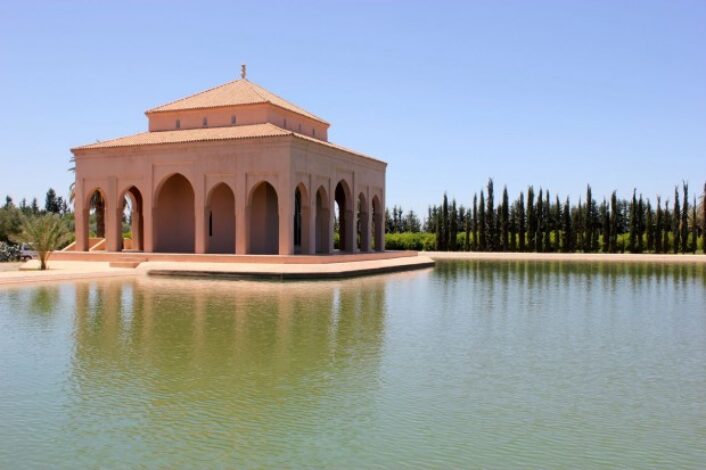Architecture
Fernando Caruncho’s gardens
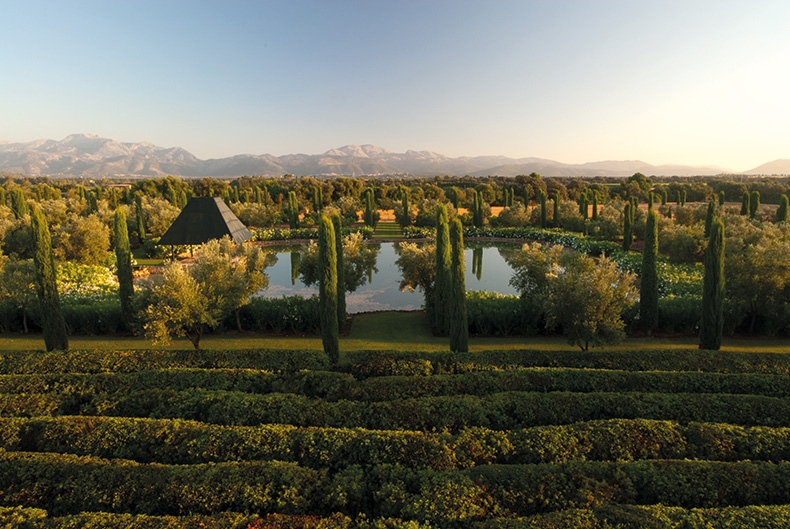
A garden in Majorca features clipped ridges and a pool with a pavilion.
Image courtesy of: Society of Garden Designers, photographed by: Raul Tomas
It is very easy to get lost in one of landscape designer Fernando Caruncho’s striking gardens. The Spaniard who lives in Madrid has a unique style; he favors strong geometric structures that feature contoured land and trees which are commonly arranged in a gridline symmetry with pools of water.
Caruncho’s background is part of the reason his designs are so unique. Prior to landscape design, the designer studied philosophy at the Autonomous University of Madrid for three years. Clearly, Plato and Aristotle (for example) continue to inspire many of his finished designs. Interestingly, both philosphers taught in their gardens. Caruncho’s understanding of light and space play into each design, quoting Epicurus, one of his inspirations, he says (courtesy of an article by Jane Garmey for 1st Dibs), “It is impossible to know outside of the garden.”
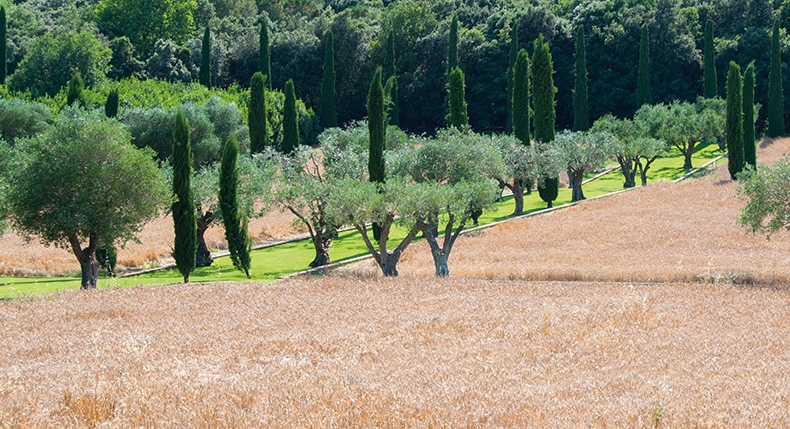
“Wheat Parterre” is one of Caruncho’s most well-known deigns. Designed in Catalonia in 1997, the 25-acre garden consists of rectangular parterres planted entirely of wheat and spotted with olive and Mediterranean cypress trees. Forever the scholar, the design was inspired by the geometric patterns in ceiling squares by Piero deal Francesca, an Early Renaissance Italian painter.
Image courtesy of: Society of Garden Designers, photographed by: Raul Tomas
Ancient Greece fascinated the young student, but he says he felt something was missing… it was all talk and no action. He briefly considered dropping out; luckily, he went to a lecture on landscape and that was his “Ahh moment.” He says, (courtesy of an interview with Stephanie Mahon for Society of Garden Designers), “I realized that to be a philosopher, you need to be a gardener. This transformed my whole life – I discovered my happiness.”
Establishing his first studio in 1979, Caruncho’s first job was a small garden for his uncle, a well-known interior designer. The uncle’s house was designed by the famous modernist architect, Richard Neutra so Caruncho felt the pressure. The young landscape designer spent two years creating the perfect space and the end result was reminiscent of the gardens of 17th-century Kyoto. After the garden was featured in Vogue Decoration…no longer was Caruncho an unknown gardener.
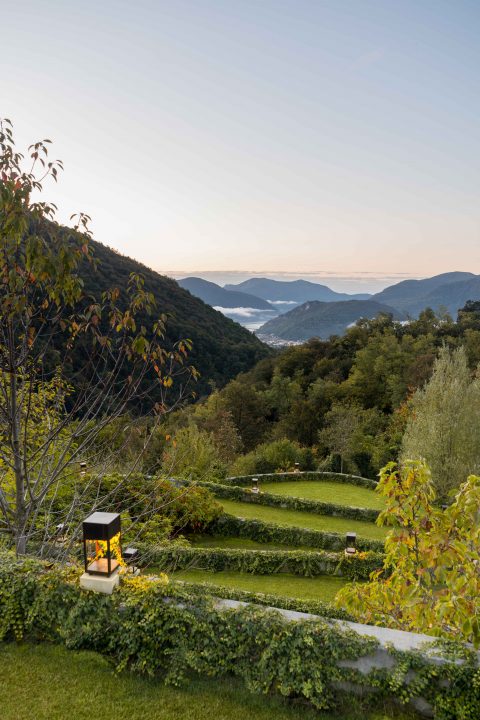
A property in Switzerland, with views of Lake Lugano. The linden and white willow trees ensure that the stunning view will never be obscured. Caruncho and the client call the garden, “the dragon” because of the long, winding walls.
Image courtesy of: 1st Dibs, photographed by: Maru Serrano
The designer works from a grid…keeping to strict right angles or circles with curves and waves. Caruncho never compromises on symmetry and he always works to maximize the right amount of light. He says, “To create a garden is to control the light. In our projects, the primary material is the light, but the way we control it is with geometry. Without realising it, we humans need geometry to understand a space, to connect with it. The geometry is the receptacle of the light.”
With a specific approach that is deliberate and methodical, Caruncho places a lot of emphasis on “genius loci,” the spirit of the place. He verifies that you need to understand a location’s personality before you can begin to adorn the surroundings. He makes sure to visit the site multiple times, often at different times of day and sometimes in different seasons. He adds, “The process is very intuitive and sensitive. To make a place, it is important to understand its personality and character. The first impression is really important. When you approach a place for the first time, it is like meeting a person. You have to spend some time and get to know them.”
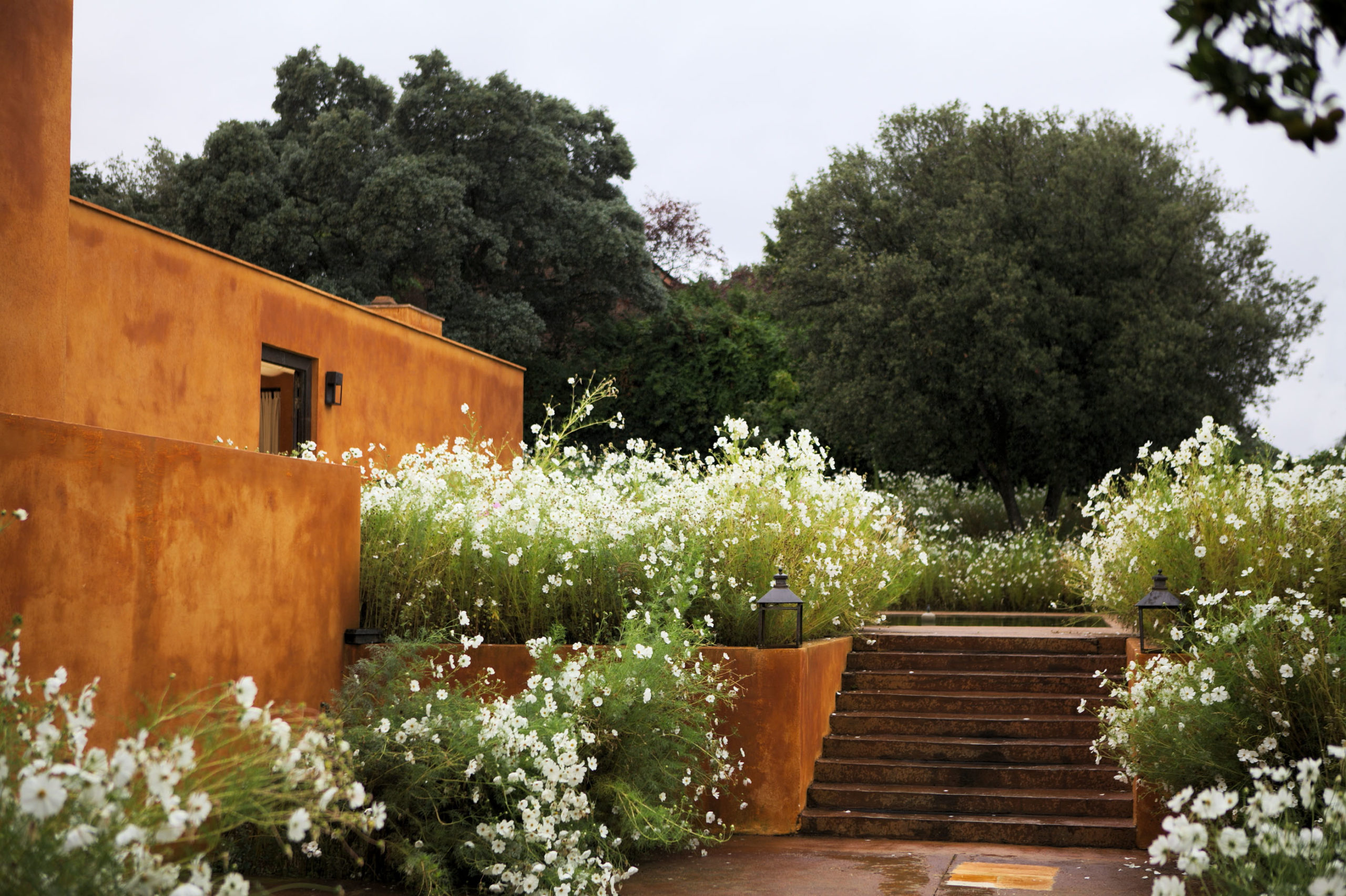
Temporal Cosmic Garden is found in Caruncho’s own house on the outskirts of Madrid.
Image courtesy of: Caruncho Garden and Architecture
The designer’s garden was perfect until an unfortunate disease struck the property. Sadly, this lead to the removal of focal Escallonia. Drawing on his philosophical background, Caruncho said, ‘We have the perception now in modern society that everything should be happy all the time, and death is dramatic and traumatic. We need to accept it as a normal thing. To have lost these masses of plants was awful, but I began to understand that even the process of death in the garden has its beauty.”
Embracing the change, Caruncho filled the emptiness with white cosmos. The short blooming plant erupts in a flurry of flowers, for a short season, prior to vanishing. 25 years of cultivation simply gone leaving behind only bare soil and trees enabled the designer the opportunity to do something different. Filling a field of flowers was a new and unexpected experience for Caruncho…one brought about by an unfortunate event; but what resulted was an amazing recreation.
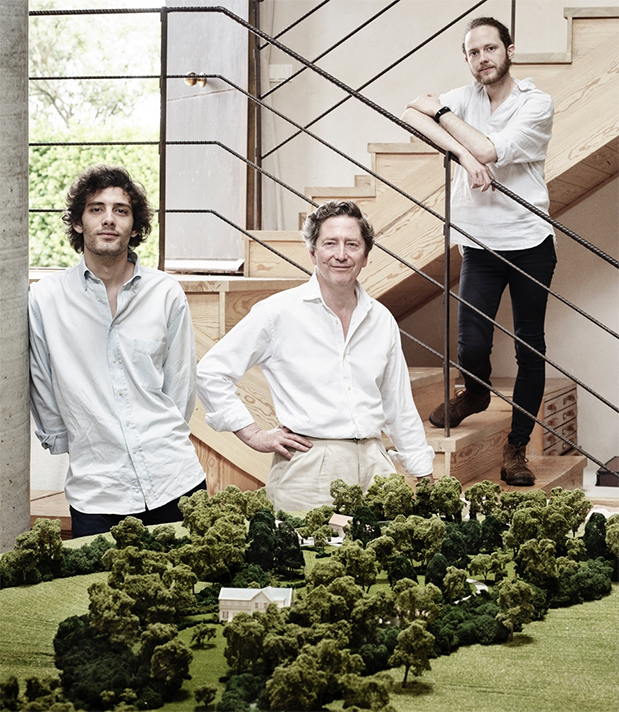
Caruncho with his sons Pedro (left) and Fernando (right).
Image courtesy of: Gardens of Light
With each project taking between one to three years from the first visit to completion, Caruncho gets to intimately know his clients by the time the project is finished. Often times, the client wants both the house and garden honed together…something that the designer welcomes. He says, “I don’t distinguish between gardens and architecture – to me it is the same. At the moment, we are doing the integral architecture and garden for a project in Lugano, Switzerland, which is really amazing, because the focus is the landscape, not the house or garden.”
At the top of his field for over 40 years, Caruncho has completed close to 200 projects. Currently, his two architect sons, Fernando and Pedro, work alongside their dad. He loves working with his sons and wholeheartedly believes that part of his job is to impart his knowledge onto a younger generation. He further adds that travel is vital because it is how you gain an education. Through varied experiences, you gain knowledge and that is how you learn to create. He concludes, that the problem with design is that “design is too mental now. It needs to be more unconscious” He adds, that it is necessary “to take the time to be in the place, maybe for days. Have the discipline to hear, see, understand. Don’t project your thoughts and prejudices onto the place – when you do this you violate the place. Let the place be, and take action only when it is absolutely necessary.”
With the recent publication of “Reflections of Paradise: The Gardens of Fernando Caruncho,” the designer’s star will surely shine even brighter. There is due cause however…the projects he completes are utterly dreamy.
